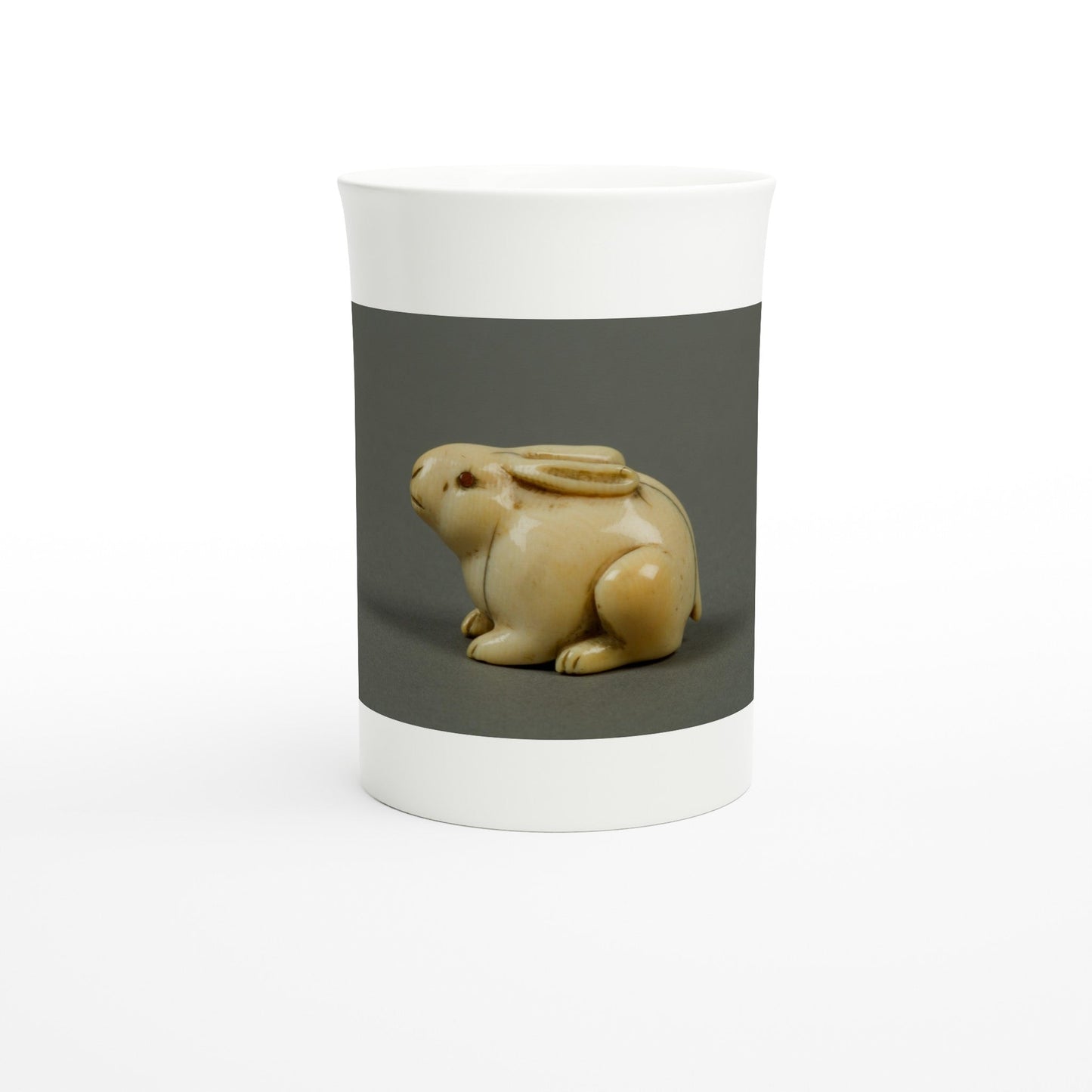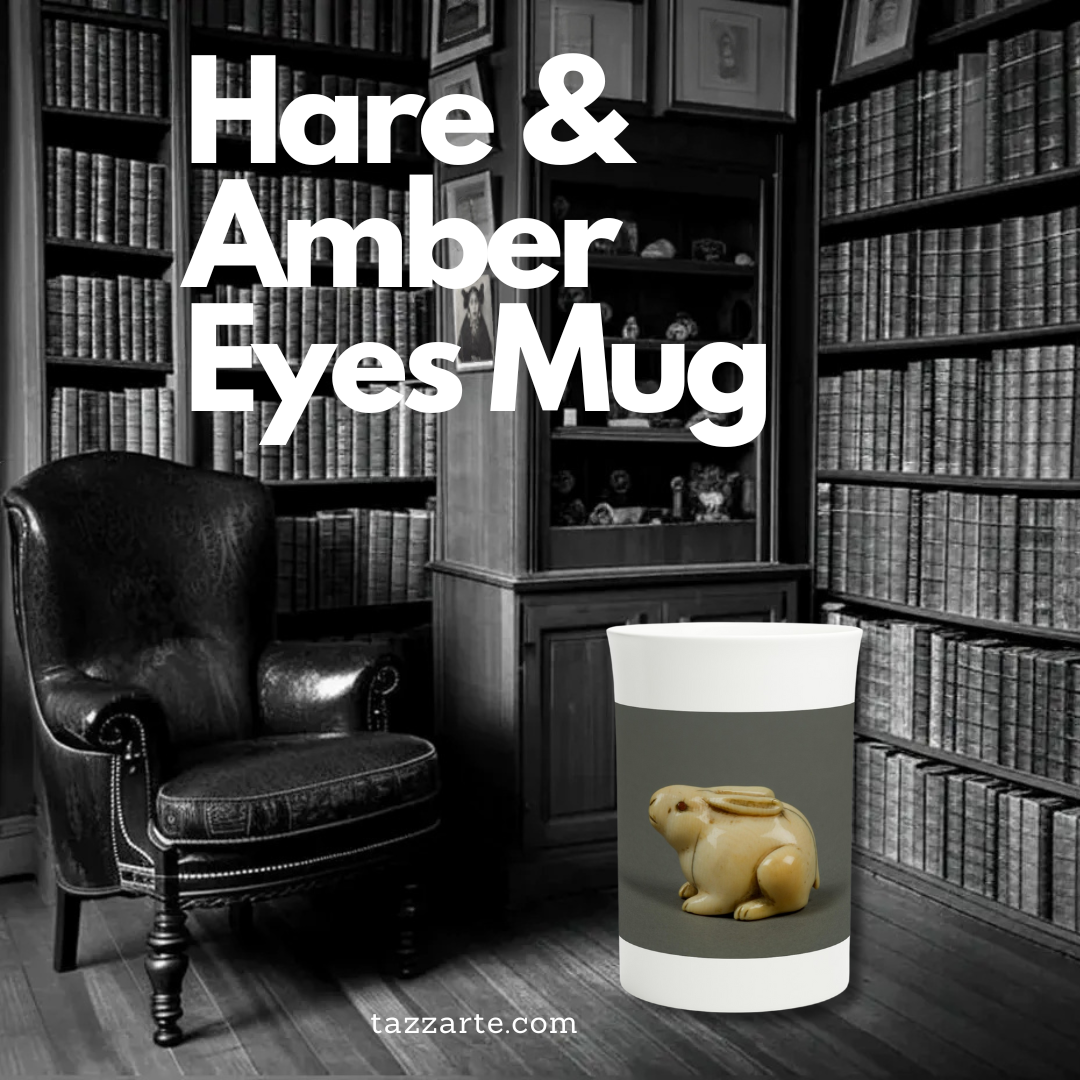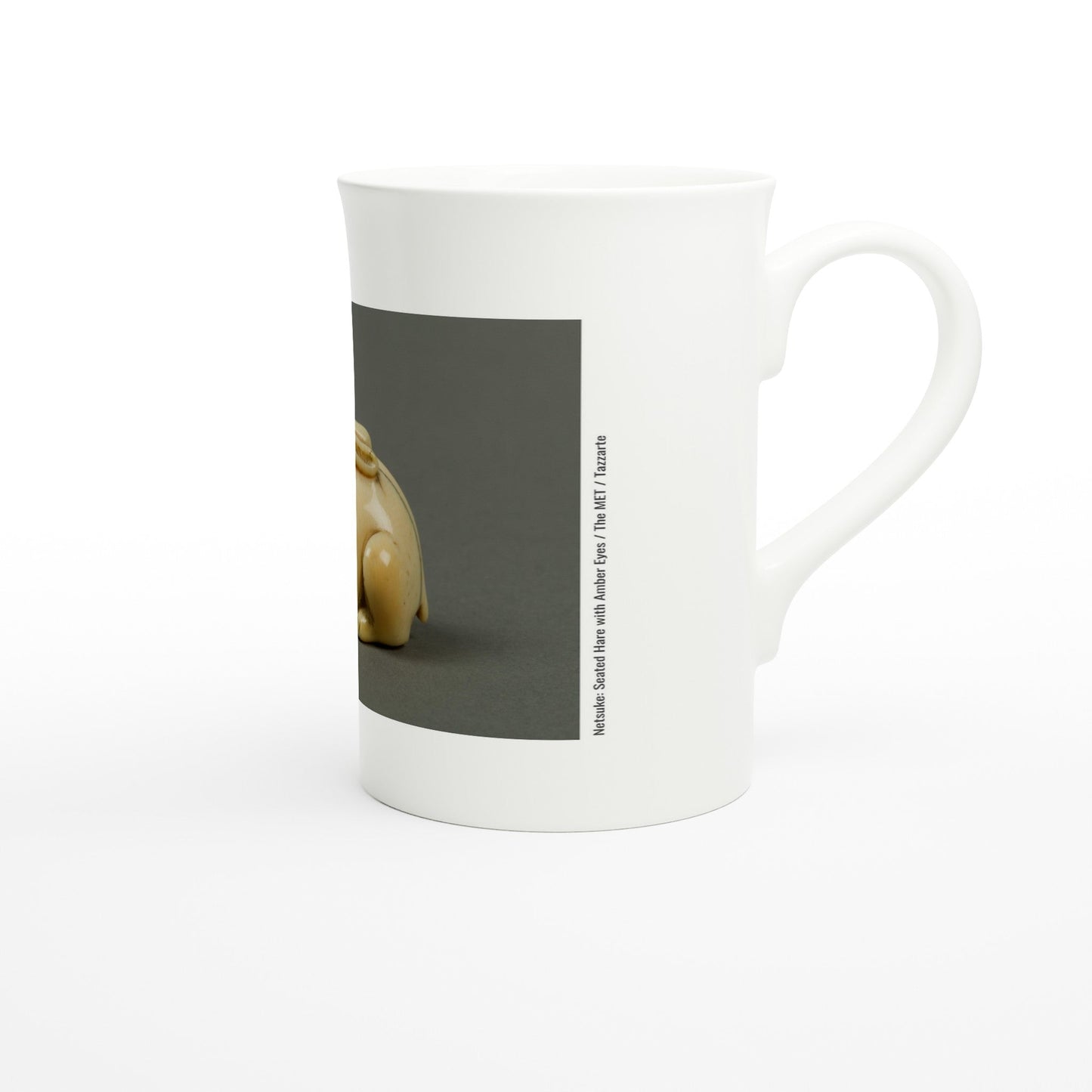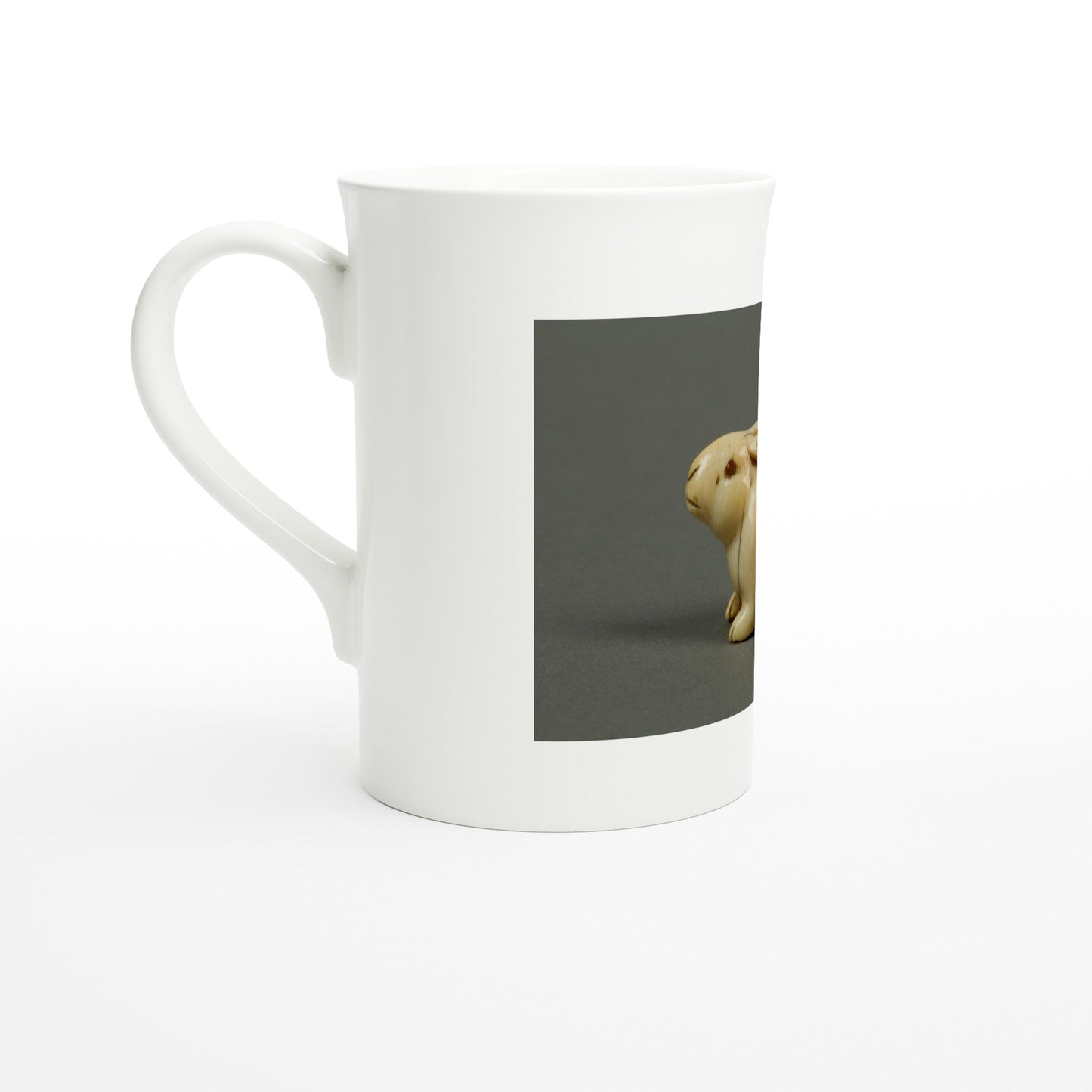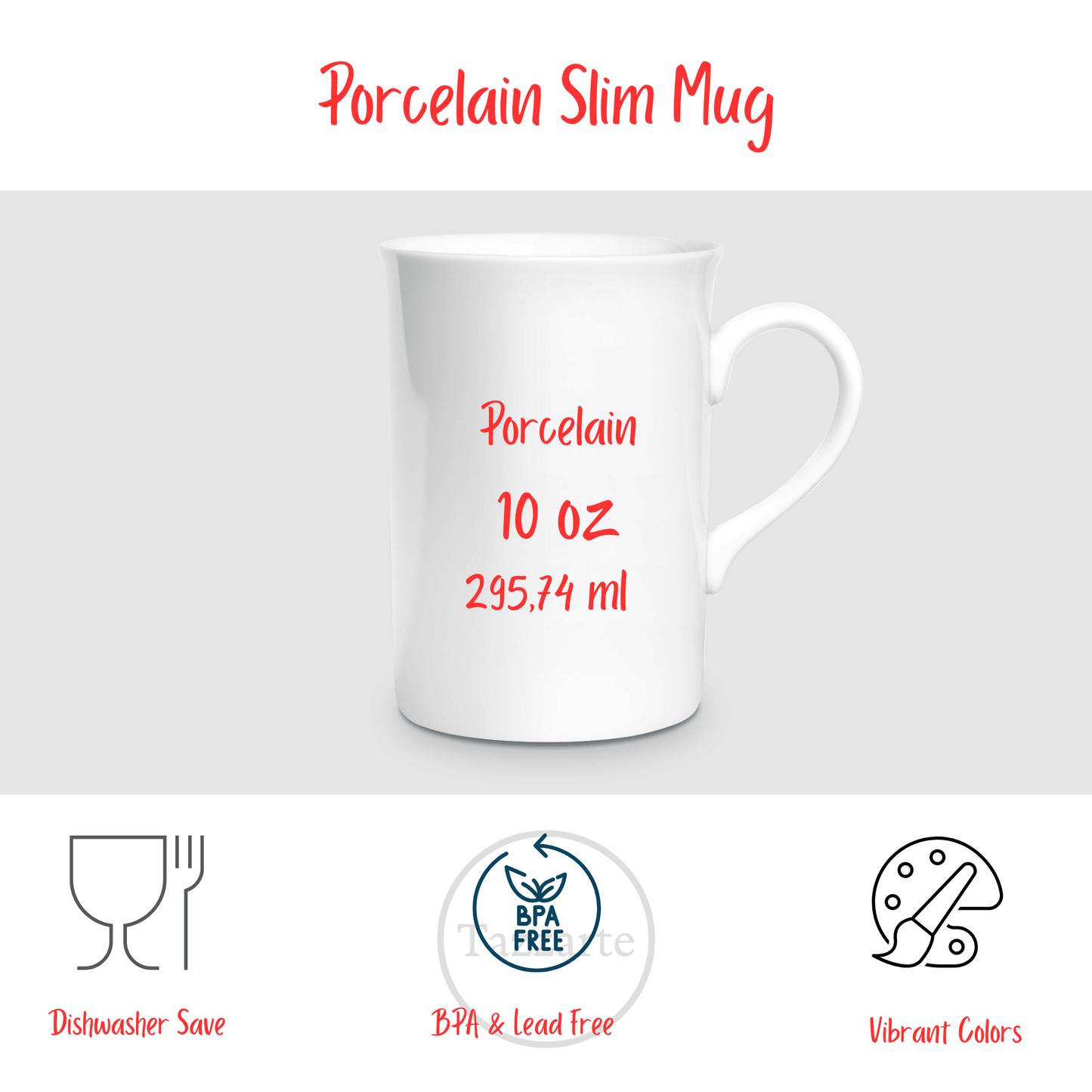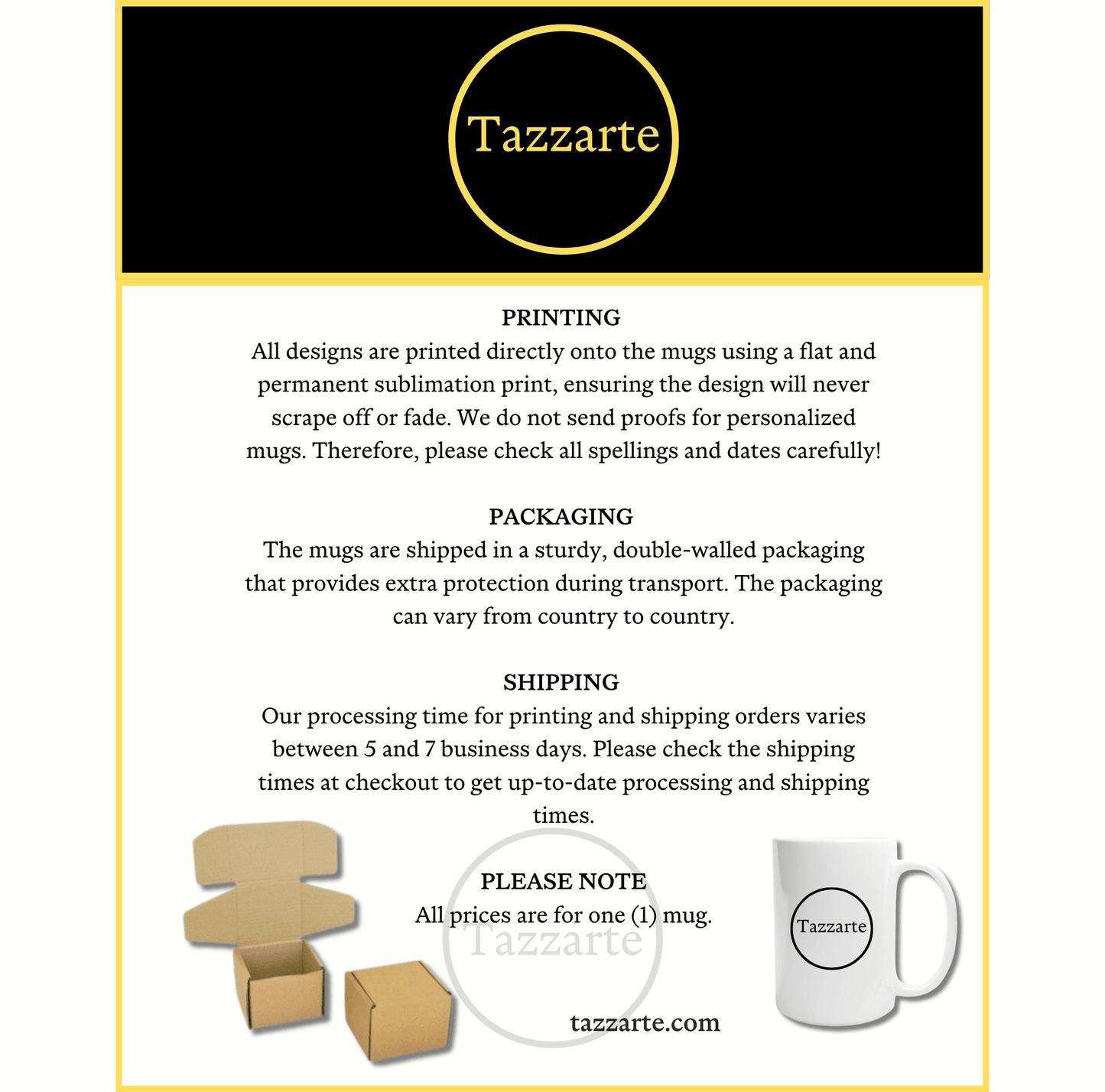Tazzarte
Netsuke: Hare & Amber Eyes Mug
Netsuke: Hare & Amber Eyes Mug
Couldn't load pickup availability
Share
This exceptional mug features a netsuke from the collection of Adam Clark Vroman, now part of the Metropolitan Museum of Art's collection. The netsuke depicted is a beautifully carved field hare with amber eyes, dating back to Japan's Edo period (1615–1868). Crafted mostly from ivory, this miniature artwork measures just 1 5/8 x 1 1/4 x 1 3/8 inches, embodying the quintessence of Japanese art where even the smallest objects are imbued with profound meaning.
 Adam Clark Vroman, 1856–1916 (National Portrait Gallery, Smithsonian Institution; acquired through the generosity of Elizabeth Ann Hylton)
Adam Clark Vroman, 1856–1916 (National Portrait Gallery, Smithsonian Institution; acquired through the generosity of Elizabeth Ann Hylton)
Historical Context: Netsuke were initially functional, serving as toggles for small containers or purses on the kimono sash due to the absence of pockets. Over time, their artistic value surpassed their utility, becoming revered for their craftsmanship and narrative depth. Adam Clark Vroma, a notable American photographer and collector based in Pasadena, California, was instrumental in bringing the beauty of Japanese netsuke to the American audience. His passion for Japanese art led him to amass one of the most significant collections of netsuke in the U.S., including this hare/rabbit with amber eyes, which was later donated to the Metropolitan Museum of Art, furthering the cultural exchange between East and West.
We are all aware of the influence of Japanese design in the Greenes’ work, and of the popularity of Japanese culture in and around Pasadena when The Gamble House was being built – whether embodied in George Turner Marsh’s Japanese tea garden, or the half-dozen or more purveyors of “Japanese Art Goods” listed in the city’s directories. The Pasadena Daily News thus declared with some authority in February 1907, “The rage for Japanese art that prevails in all society and art educational circles in the east, has at last struck Los Angeles.” This is the first of two articles in which I’ll be investigating some lesser-known Japanese connections with the Gambles and some of the people that they came to know in Pasadena.
Vroman is and was also well-known for his keen interest in southwestern and Native American culture, documented in the hundreds of photographs he took of Pueblo villages, missions, and native peoples between 1895–1904. His fascination with Japan may perhaps be less familiar, to many of you, and was something he pursued in later years, at about the same time that the Gambles and Greenes were becoming interested in it as well. During the Gambles’ trip to Japan in 1908, Clarence even mentioned in a letter that in Yokohama “we went to the photographer that Mr. Vroman had recommended to us and found that he was fine. Some of the transparencies he had were beautiful—one of Fuji especially. The lantern slides were fine and very well colored.” Vroman had been visiting Japan since 1903, and was even in the country in 1908, though it remains uncertain whether he met with the Gambles there.
 Netsuke of Hare, 19th century, Ivory, Amber, H. 1 in. (2.5 cm); W. 1 1/2 in. (3.8 cm); D. 1 in. (2.5 cm), Metropolitan Museum of Art (Gift of Mrs. Russell Sage, 1910)
Netsuke of Hare, 19th century, Ivory, Amber, H. 1 in. (2.5 cm); W. 1 1/2 in. (3.8 cm); D. 1 in. (2.5 cm), Metropolitan Museum of Art (Gift of Mrs. Russell Sage, 1910)
Artistic Parallels with Edmund de Waal's "The Hare with Amber Eyes" and the Influence of Japan: Similar to Edmund de Waal's exploration of his family's netsuke collection, this mug's design invites contemplation on the personal and cultural stories embedded in each piece. "The hare with amber eyes", much like de Waal's hare, symbolizes memory, history, and the intricate connections between art, family, and time. This netsuke also reflects the broader influence of Japanese aesthetics in America, akin to the architectural homage seen in the Gamble House, where Japanese design principles were integrated into American homes.
A journal entry of March 4, 1908, records a particularly busy day for then 14-year-old Clarence Gamble, and included visiting Mr. Vroman: “Went to lot AM. Got chased home by rain. Studied a lot. Went to Blacker house Oak Knoll PM. Got new camera. Went to Mr. Vroman’s after dinner. Saw a fine collection of Netsukes from Japan.” By this time, Vroman had become rather famous for his collection of Japanese netsuke, not least due to his recent sale of 2500 netsuke to wealthy philanthropist Mrs. Russell Sage, who in turn gave them to New York’s Metropolitan Museum of Art. In its April 1911 issue, the museum’s newsletter boasted that “As a collection it is thought to rank with the largest collections in Europe including the famous collection in the British Museum.”
Symbolism and Craftsmanship: In Japanese culture, the hare represents swiftness and grace, qualities captured in the meticulous carving of this netsuke. The choice of ivory for its smooth texture and amber for the eyes showcases the artist's skill and the material's symbolic value, much like how Japanese art was cherished in the West for its elegance and craftsmanship.
The Pasadena Star News ran a feature on Vroman’s collection on September 17, 1914, headlined “Netsukes Hold Wonderful Charm: Quaint Little Japanese Carvings Embody Much of Beauty.” Its author, Gussie Packard Dubois, described the experience of being invited into Vroman’s home to “gloat over the rare and beautiful Japanese handicraft which for years he has been gathering in his trips abroad.” As Vroman brought out tray after tray of the exquisitely carved objects, Dubois noted “the fineness of the polish on each netsuke,” so that you desire to hold them in your hand and feel the unbelievable finish.” Unwittingly, perhaps, she was attracted to the objects by their aji, a Japanese term that described the way the artist could communicate his spirit through touch as well as sight. It is a spirit that I think we also feel in looking at (and very occasionally touching) many Greene & Greene-designed objects, and that the Gambles would no doubt have shared.
Mallek, Anne. (2017). The Influence of Japan. Gamble House - The Greene Sheet, December 2017. Retrieved from https://gamblehouse.org/the-influence-of-japan/
Cross-cultural Understanding and the Artistic Legacy of Japan: This mug, with its 10-ounce size, is not just a vessel for your favorite beverage but a piece of art history that bridges cultural divides. Crafted in homage to Japan as a porcelain mug, it highlights the delicate beauty of netsuke. By using this mug, you engage with a legacy of cultural appreciation, where art acts as a conduit for dialogue between the East and the West. It invites you to ponder the stories art tells, the journeys of objects across continents, and how even a humble hare can encapsulate such profound cultural narratives. Enjoy your coffee or tea with this piece of art history, appreciating the role of collectors like Vroman in promoting cross-cultural understanding and the artistic legacy of Japan.
If you are interested in reading a particularly fascinating story about a collection of netsuke, I recommend "The Hare with Amber Eyes" by Edmund de Waal. To view some examples of netsuke in person, you might visit the Adam Clark Vroman - Margaret Olivia Sage Collection at The Metropolitan Museum of Art.
Product Details:
- Material: High-quality white porcelain
- Capacity: 10 oz (300 ml) — perfect for enjoying tea or coffee
- Care: Dishwasher and microwave safe for easy maintenance
- Safe Enjoyment: Lead-free and BPA-free, ensuring your health and safety
- Design: © tazzarte.com
- Artwork: Netsuke of a Hare with Amber Eyes, Edo period, Ivory and Amber, 19th century, Metropolitan Museum of Art, New York, Gift of Mrs. Russell Sage, 1910
